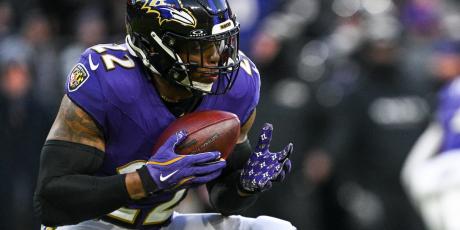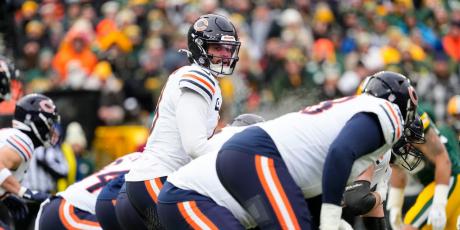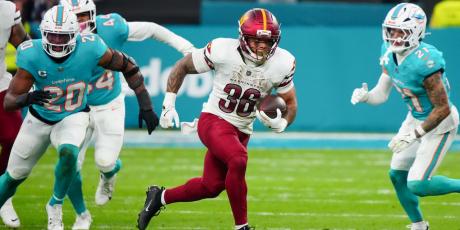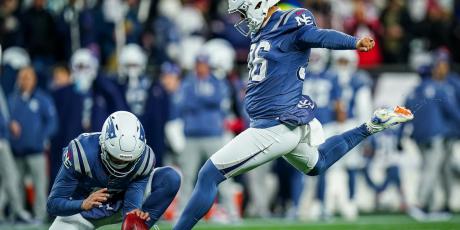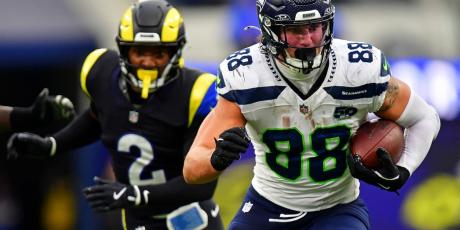Learning to Love Schedule-Adjusted Fantasy Points Allowed (aFPA)

Raw fantasy points have a place in our little game, especially in the opening weeks of the NFL season.
To rely heavily on those raw numbers throughout the season, however, is a grave mistake. It’s a mistake I didn’t know I was making until two short years ago, when I first turned to 4for4’s unique take on how much fantasy production defenses were allowing to quarterbacks, running backs, wide receivers, and tight ends.
4for4’s Schedule-Adjusted Fantasy Points Allowed (aFPA) metric drains the bias out of the more commonly used raw fantasy points allowed, creating a clearer picture as to how defenses are performing against the various positions.
I relied on the site’s adjusted fantasy points throughout my 2013 Quarterback By Waiver Wire (QBBWW) series. I credit the clarity of 4for4’s signature metric for helping me highlight waiver wire signal callers who averaged 17.7 fantasy points per week and optimal QBBWW plays who put up 23.1 points a week.
Here’s a quick look back at how effective Schedule-Adjusted Fantasy Points Allowed were in pinpointing favorable quarterback matchups – a key to exploiting the massive inefficiencies in the fantasy quarterback market.
The worst of the worst
You’ll know, if you read the QBBWW pieces throughout 2013, that we eventually turned our attention toward the most consistently terrible secondaries professional football had to offer: the Vikings, the Cowboys, the Jaguars, the Raiders, and the Patriots.
Below is a rundown on how often these teams – the five worst in adjusted points allowed to quarterbacks – gave up weekly top-12 performances to opposing signal callers.
|
Team |
Top-12 performances allowed |
Adjusted fantasy points allowed to QBs |
|
Vikings |
12 |
23.7 |
|
Cowboys |
8 |
21.4 |
|
Jaguars |
8 |
19.9 |
|
Raiders |
7 |
20.6 |
|
Patriots |
5 |
19.5 |
Minnesota’s injury-riddled secondary, along with a relatively stout front seven that often forced teams to the air, allowed QB1 (top-12) quarterback outputs in a whopping 75 percent of their games. Rolling out waiver wire options like Josh McCown and Joe Flacco became something close to a no-brainer by midseason.
These five worst teams gave up top-12 quarterback numbers in precisely half of their collective games in 2013. A coin flip’s chance might not seem like fantastic odds, but in the uncertain world of isolating favorable matchups, I’ll take it every time.
The worst three teams – Minnesota, Dallas, and Jacksonville – gave up QB1 performances in 57 percent of their combined games.
4for4’s Schedule-Adjusted Fantasy Points Allowed scooped New England into the five-worst mix, even though the Patriots allowed the 11th most raw fantasy points to opposing signal callers (16.2 points per game). Adjusting the points took into account that New England was scorched by the likes of Geno Smith, Ben Roethlisberger, Jason Campbell, and Ryan Tannehill – not exactly a murderers’ row of studly fantasy quarterbacks.
The Falcons’ secondary – seventh worst in aFP to quarterbacks – escaped the worst-five list in large part because they were tormented by some of the league’s best quarterbacks: Drew Brees (twice), Cam Newton (twice), Tom Brady, and Russell Wilson.
Atlanta was certainly a worthy target for QBBBWW adherents – and daily gamers, to be sure – but the adjusted points showed us that when strength of schedule was taken into account, the Patriots’ coverage unit was worse. I think that’s just one of the valuable schedule-adjusted lessons of 2013.
The best of the best
Perhaps more important than finding exploitable defenses was avoiding the NFL’s most ferocious defenses against quarterbacks, and passing attacks in general.
The below teams were to be avoided in our search for QBBWW options for varying reasons: the Seahawks’ coverage unit was downright evil, teams grinded down the clock after grabbing big leads over the Giants, and offenses usually gouged the Rams on the ground and had no reason to take to the air.
|
Team |
Top-12 QB performances allowed |
Adjusted fantasy points allowed to QBs |
|
Seahawks |
2 |
8.6 |
|
Bengals |
3 |
11.6 |
|
Rams |
4 |
11.9 |
|
Bills |
4 |
10.8 |
|
Giants |
6 |
10.3 |
With the aforementioned reliably bad secondaries available for our enjoyment, I usually wrote off quarterbacks facing these five defenses.
The numbers are clear as to why this approach was a decent idea: the best five defenses against quarterbacks gave up top-12 fantasy performances a microscopic 23.7 percent of the time. The three best teams -- the Rams, Seahawks, and Bengals -- allowed top-12 quarterback stat lines in 18.7 percent of their combined games.
A clearer red light you couldn't find in fantasy football.
Fantasy owners making weekly decisions based on raw fantasy points surely saw the Giants, for one, as a defense to target. Big Blue, after all, allowed 14.4 points to quarterbacks before adjusting for strength of schedule. That’s certainly no green light, but it’s not nearly as off-putting as the measly 10.3 adjusted points New York gave up to signal callers.
The Panthers, who gave up just 11.1 raw fantasy points to quarterbacks, didn’t crack the top-five list because of the signal calling competition they faced, including Christian Ponder, EJ Manuel, Eli Manning, and Carson Palmer. It’s not that Carolina didn’t maintain a high-end secondary, but when schedule was taken into account, the Panthers allowed 12.9 points to quarterbacks. They were firmly on my “avoid” list, even if they weren’t in the top five.
Our little game is a tough one, even with incredibly useful tools like 4for4’s Schedule-Adjusted Fantasy Points Allowed. I’m certain that these adjusted points have offered me at least a small edge over the past few years, and I think you’ll find the same this season.

